From Guymon to Poteau and Beyond: The Biggest StateImpact Stories of 2013
-
Joe Wertz -
Logan Layden
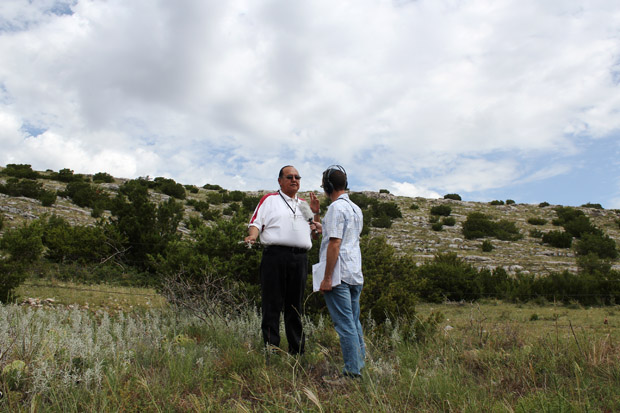
Joe Wertz / StateImpact Oklahoma
Logan Layden talks with Kiowa historian "Joe Fish" DuPoint about the potential impact of limestone mining on Longhorn Mountain in August 2013.
The StateImpact team traveled about 10,000 miles in 2013 to interview Oklahomans about how government policy affects their lives.
Our reporting took us to all corners of Oklahoma, across the border into Texas, and to the nation’s capital and the U.S. Supreme Court.
Water
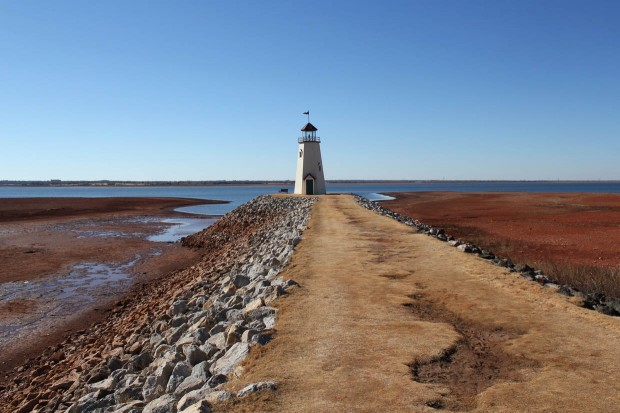
Joe Wertz / StateImpact Oklahoma
In January 2013, Oklahoma City's Lake Hefner recorded its lowest lake level in its 66-year history.
Drought had gripped the entire state by the beginning of 2013, and was a prominent focus of many of the year’s stories.
Oklahoma’s big fight with Texas over water in southeastern Oklahoma went all the way to the U.S. Supreme Court, and StateImpact was there to hear the arguments in the case the Sooner State eventually won.
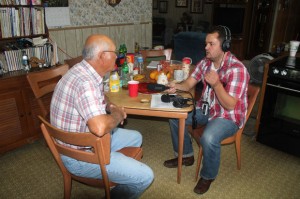
Logan Layden / StateImpact Oklahoma
Joe Wertz interviews Jimmy Piercey about the fate of Oklahoma's Depression-era shelterbelts in September 2013.
Another aspect of the drought that caught our attention was its effect on Oklahoma’s crumbling water infrastructure, particularly in small towns like Konawa, Okla., where the prospect of costly repairs and updates threaten the very existence of the community.
At the bottom of Konawa’s wells: The Arbuckle-Simpson Aquifer, perhaps the state’s most sensitive water resource. The underground water supply has been stressed not only by drought, but by sand and limestone mining, too.
StateImpact was on hand when the Oklahoma Water Resources Board finally put a limit on how much water mining companies — and anyone else — can displace from the aquifer so many towns rely on.
Moore Tornado
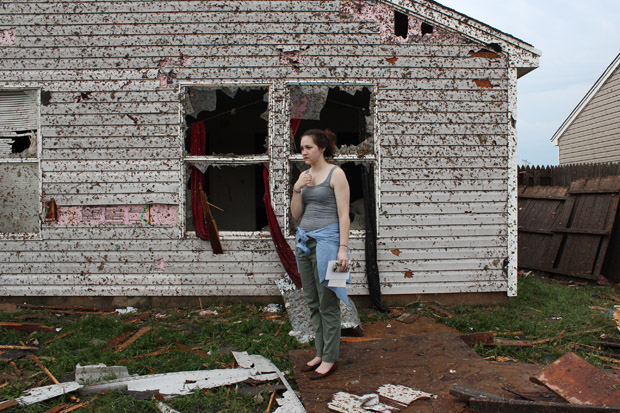
Joe Wertz / StateImpact Oklahoma
Lauren Gardner stands near a family members house, which was destroyed by the tornado.
But the story we remember most came right to our doorstep — to Moore — in the form of a tornado destructive beyond description. For the next few months our focus shifted to the government’s role in natural disasters.
We asked why Oklahoma has prioritized spending federal money on individual storm shelters instead of shelters in schools, and why emergency managers are no longer interested in public community shelters, when they were a big focus in Cold War-era disaster planning.
StateImpact also examined state and local building codes, which don’t account for tornadoes, and used data to truth-test some of the popular myths surrounding twisters.
Earthquake Swarm
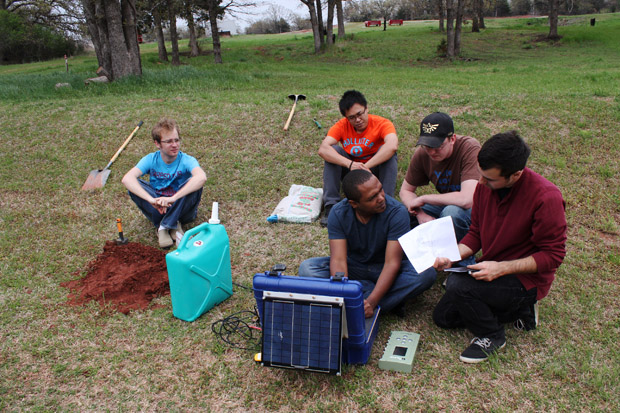
Joe Wertz / StateImpact Oklahoma
University of Oklahoma graduate students near Wellston, Okla., installing a seismometer to study central-Oklahoma's earthquake swarm
But throughout the year, another issue was making waves, seismic ones. Oklahoma is in the middle of an earthquake swarm, and scientists say it’s likely linked to oil and gas drilling.
StateImpact’s earthquake coverage was the most popular among readers, too. Our March 2013 story that detailed a new study linking Oklahoma’s quakes to disposal wells used by the oil and gas industry was the No. 1 most-viewed story on the site in 2013, and our interactive map of the earthquake swarm came in at No. 2.
